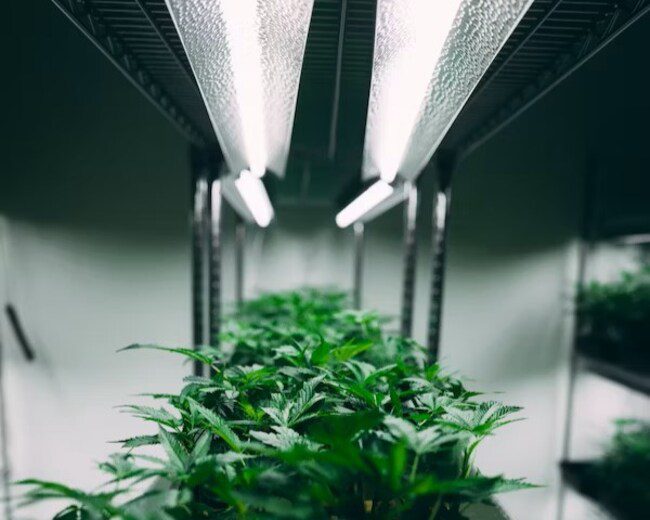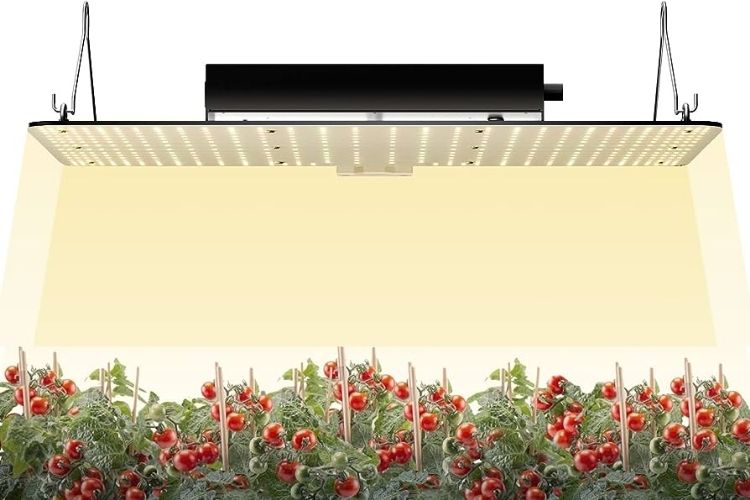Do Fluorescent Lights Help Plants Grow? Its Pros And Cons
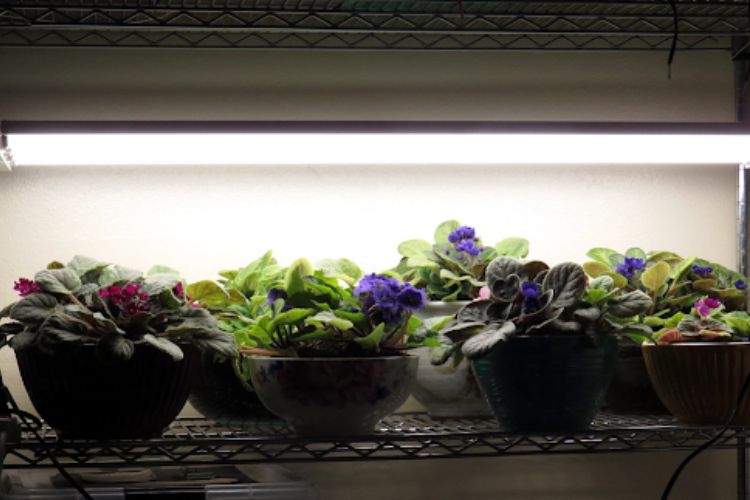
If you want to grow plants inside your house, you may wonder: Do fluorescent lights help plants grow?
My team will answer this question comprehensively and show you both the benefits and drawbacks of this lighting source. Let’s dive into it to explore now!
Do Fluorescent Lights Help Plants Grow?
The answer is Yes! Fluorescent lights are perfect for plants that require low to medium light levels.
Full spectrum
Fluorescent lights can provide blue light waves, which is beneficial for plants and seedlings to develop. They also emit a full spectrum of light that is suitable for photosynthesis.
Intensity
Furthermore, this lighting source is cool, so it will not burn the foliage. The standard fluorescent bulbs additionally have a limited intensity, so you can safely place them close to your growing plants. For example, if you are growing seedlings, the distance between your young plants is around 2 inches. If they’re older plants, the safe distance is about 4 inches.
If you use these devices for your indoor garden, leave them on for around 16 hours daily to get the best result. Yet, not all fluorescent bulbs are equal. Some may be better for plant growth than others.
Color
Fluorescent bulbs come in different colors, from warm to cool white. The ideal color temperature for plant growth is around 6500K. That’s because plants need blue and red wavelength sources to grow, and these lights with a color temperature of 6500K provide the right balance of blue and red light.
Intensity
The intensity is another crucial factor to consider when using this lighting option for plant growth. The luminous efficacy of this lighting source is 50 – 100 lm/ft2. It is ideal for seedlings that require medium or low intensity.
What Are Pros And Cons Of Fluorescent Lights?
Everything has two sides, and this lighting source is not exceptional. Check the benefits and drawbacks before using fluorescent lights for your plants!
Pros
- Generate less heat than traditional incandescent bulbs.
- Various colors, including warm and cool tones.
- Affordable and available, making them popular for beginners.
Cons
- Less potent than other grow lights.
- Not suitable for all plants, especially those requiring high-intensity light.
- Small amounts of mercury.
What Are The Best Fluorescent Grow Lights?
Both CFL and T5 are the best fluorescent grow lights for indoor gardening.
CFL
CFL lights stand for compact fluorescent light. These bulbs are inexpensive and widely available at hardware stores and garden centers. CFL bulbs come in different wattages and color temperatures. So you can choose the type that’s best suited for your plants. They’re also easy to set up and use – simply screw them into a standard light socket, and you’re ready to grow. However, CFL lights have a relatively short lifespan and may need more frequent replacements than other types.
T5
T5 grow lights are a more advanced type of fluorescent light. They are more efficient and produce more light than traditional ones. These bulbs are available in different lengths and wattages, so you can customize the setup to fit your needs. They are also more durable than CFL grow lights and have a longer lifespan. However, T5 grow lights are more expensive than CFLs and may require a more complex setup.
Read more: HID Vs LED Grow Lights: Which Is For Your Indoor Garden?
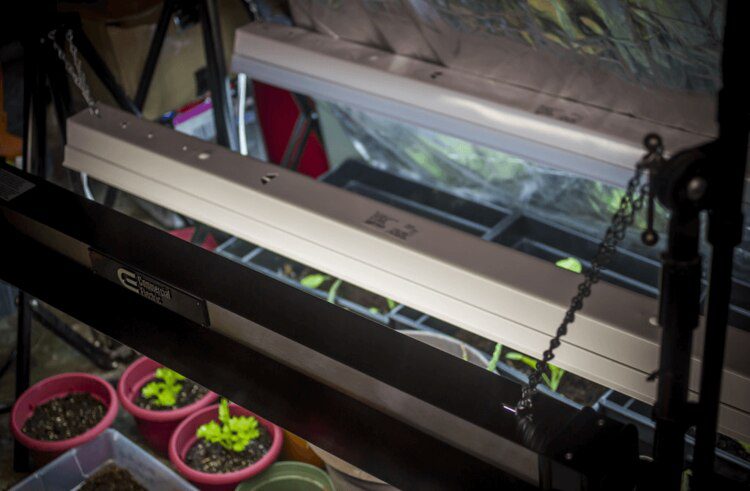
When Should You Use Fluorescent Lights For Plants?
Fluorescent lights can be an excellent option for growing and nurturing plants in certain growth stages.
Cultivate crops requiring low UV energy
Fluorescent lights are ideal for cultivating crops that require low UV energy. These plants do not require intense light, and these bulbs provide the perfect amount to thrive.
Nurturing houseplants
This type of light is also beneficial for nurturing houseplants. Indoor plants that do not receive enough natural light can become weak and unhealthy. These bulbs can supplement natural light and give plants the necessary light to grow and thrive. However, these lights should not be the only light source for houseplants. It would be best to use them with natural light.
Germination
Germination is a crucial stage in plant growth, and this lighting source is helpful during this phase. Young seedlings need a lot of light to develop, and these bulbs provide the right amount without burning delicate plants. Additionally, this lighting option emits less heat, which can help prevent young plants from drying out.
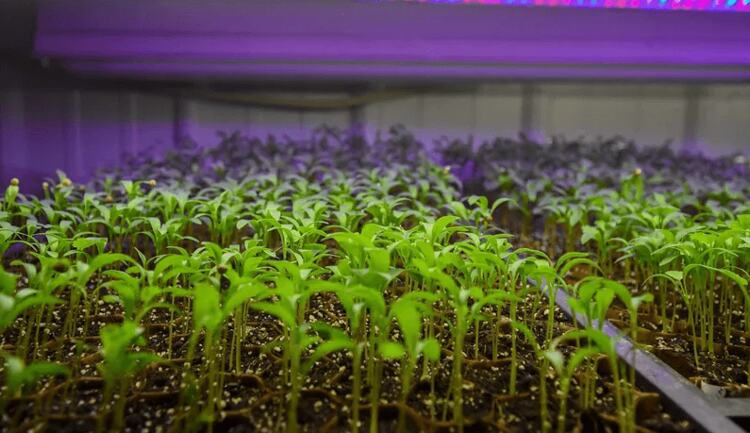
Conclusion
Fluorescent lights can help plants grow, but their effectiveness depends on light intensity and color. If you plan to use these bulbs for indoor gardening, choose the types with high light intensity. Also, ensure your plants receive the appropriate light exposure amount for their species. You can grow healthy plants indoors with the right lighting and proper care.


